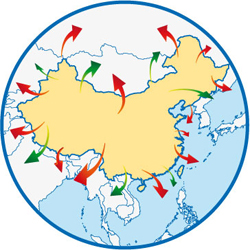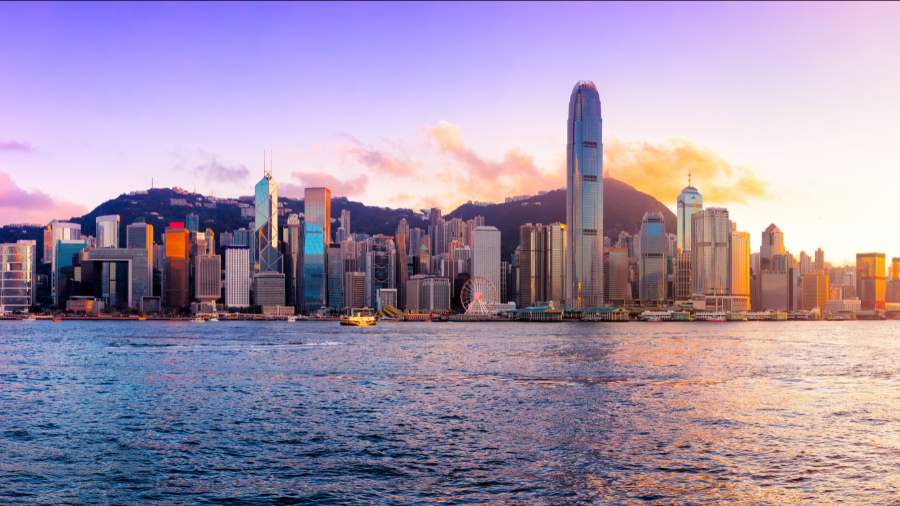The China Alternative – India

The China Alternative is our series on other manufacturing destinations in Asia that are now starting to compete with China in terms of labor costs, infrastructure and operational capacity. In this issue we look at India.
By Teja Yenamandra
Apr. 19 – This edition of our China Alternative series will take the form of a quick, focused look at India as an alternative destination for manufacturing when compared to China. For a more comprehensive guide, please see our other materials that can be found on this web site, or on the Asia Briefing Bookstore.
As it stands, China maintains an advantage over India in six key areas: scale, integration of value chain, research and development capability, productivity, ease of conducting business, and infrastructure.
In terms of scale, China has maintained and will likely continue to hold onto its significant lead. As of 2009, China exported roughly US$1.4 trillion dollars worth of goods, compared to India’s US$200 billion, which means China is in the lead by a multiple of 7. China’s exports have been growing at a faster rate too—21 percent versus India’s 18 percent.
China’s value chain is also very tightly integrated geographically, which limits transaction costs and the time from production to the market, especially in the Yangtze River and Pearl River Delta areas. Moreover, China’s exports are more complex, farther up the value chain, and in higher volume.
And labor productivity in China, although it should be measured against labor cost growth, is steadily increasing (though, India’s productivity is also increasing, albeit at a slower rate).
The World Bank’s doing business index also ranks India more than 50 spots behind China, at 134 versus China’s 79.
It is also no secret that China’s power generation, connectivity, and internet penetration are all significantly better and more consistently provided than India’s.
However, one must consider that India’s economy is only one-third the size of China’s. India may remind you of China 30 years ago because it is China 30 years ago, and has all of the untapped opportunities to go with it. India will continue its unimpeded rise over the course of this century much as how China has over the past one.
In China, costs are rising on three fronts. The RMB is appreciating against other currencies quickly, which limits China’s position as a low-cost country from which to source. Since 2005, the RMB has appreciated roughly 26 percent against the dollar. Rising labor costs have sent the average cost of a unit of labor up 15 percent per year. Moreover, industries involved in the extraction of commodities or the creation of chemicals—ones that China’s government considers “low value-add”—are on the receiving end of a tightening tax policy. The government is also pushing firms to restructure their presence from a representative office to a wholly foreign-owned enterprise or other such structures that increase a firm’s tax liability in China.
Also, both firms and labor are relocating inland, making it more difficult and costly to export goods to markets abroad. Migrant workers are becoming less willing to become migrant, and companies from Taiwan, Hong Kong, as well as Europe are seeking to move from conveniently-located coastal cities that are prime centers for export such as Dongguan to inland cities such as Chongqing.
By moving inland, firms seem to be reorienting supply chains previously targeted to export markets abroad toward the burgeoning local Chinese market. However, such a strategy only seems tenable for businesses engaged in the sale of consumer goods, and not the production of inputs such as metals or commodities. Indeed, for these firms, moving inland only needlessly increases the transaction costs of getting products to ports, but with none of the benefits that other firms may enjoy from moving inland.
That’s enough about China. India became an independent state in 1947, after approximately two centuries of British rule. Partition created Pakistan, a nation with which India has fought three wars, two over the disputed territory of Kashmir. India is currently the world’s second most populated country, with nearly 1.2 billion people in 2009. It is slated to overtake China’s lead in that category by no later than 2030. India’s economy is the 11th largest in the world, when measured by U.S. dollars, but it is the world’s fourth-largest when measured at purchasing power parity’s rate of exchange. Projections estimate that GDP will expand by roughly 9 percent in 2011. Growth is predicted to average 8.6 percent a year for the next five years, according to the Economist Intelligence Unit.
India has and will likely always continue to be a democracy. The growing importance of regional politics and regional political parties have made coalition governments commonplace at the central level. Democracy is well respected, and elections are fair. State assembly elections are in preparation now, and will continue until next month in Kerala, Tamil Nadu, West Bengal, Assam and Pondicherry.
The prime minister is the leader of the government, and requires majority support in parliament. The nation’s president is considered the head of state, and can influence formation of governments at state and national levels when no party has gained a definite majority. The nation’s judiciary is increasingly becoming independent.
At the top, the tax rate for people and corporations is 30 percent. The tax rate for foreign corporations is 40 percent. However, a system of exemptions reduces the effective tax rate for Indian companies to roughly 20 percent. All firms pay a 10 percent tax on distributed profits. Customs duties have been lowered significantly but still remain high by international standards.
India arose from the 2008-09 Global Financial Crisis in better shape than many emerging markets. However, the progress made on cutting the fiscal deficit has nearly all been lost, and the government needs to nurture its growing private sector. Moreover, inflation, which in February rose to 8.3 percent year on year, remains a key concern for policy makers.
With respect to foreign trade, India’s trade deficit slimmed to US$106.5 billion in 2009. In FY2007-2008, China became India’s largest trading partner. Incoming foreign direct investment totaled US$37.18 billion in 2009, despite the poor global economic climate, and even grew from the previous year.
Other recent changes include:
The central government raised the national minimum wage in 2009 to Rs100 per day, from Rs80. In April 2010, it raised the wage ceiling for coverage under the national health insurance scheme for industrial workers to Rs15,000 per month.
Dezan Shira & Associates provide foreign direct investment advice and services to clients in both China and India. The firm provides due diligence, incorporation, tax, accounting and other business services from ten China offices and five in India. Please contact the practice at china@dezshira.com or india@dezshira.com as appropriate, visit the firm’s web site here, or download the firm’s brochure here.
Related Reading
Our complete series on other manufacturing destinations in Asia that are now starting to compete with China in terms of labor costs, infrastructure and operational capacity.
 Doing Business in India
Doing Business in India
Our recently published, 156-page business introduction to India, the second fastest growing economy in the world, providing a thorough and in-depth analysis of India, its history, key demographics and overviews of the states and union territories highlighting business opportunities and infrastructure in place in each region. A comprehensive guide to investing in India is also included with information on FDI trends, business establishment procedures, economic zone information, labor and tax considerations, as well as an analysis of Indian business etiquette and culture. Priced at US$40 (PDF).
Our magazine and regular news service about doing business in India. We cover topics relating to the Indian economy, the market in India, foreign direct investment and Indian law and tax.
This unique book is an introductory study of all 14 of China’s neighbor countries: Afghanistan, Bhutan, India, Kazakhstan, Kyrgyzstan, Laos, Myanmar, Mongolia, Nepal, North Korea, Pakistan, Russia, Tajikistan and Vietnam.
 Operational Costs of Business in China’s Inland Cities
Operational Costs of Business in China’s Inland Cities
It is widely held that land and labor costs in inland provinces offer quite significant cost savings over major east coast and southern cities. In this issue, we take a quick look at the numbers behind these beliefs.
Coastal China, Inland China, India or Vietnam for Your Sourcing Business?
- Previous Article China-Vietnam Business Update: Apr. 19
- Next Article An Introduction to Kunshan, China’s Richest County-Level City


















 The China Alternative
The China Alternative
 China’s Neighbors
China’s Neighbors







